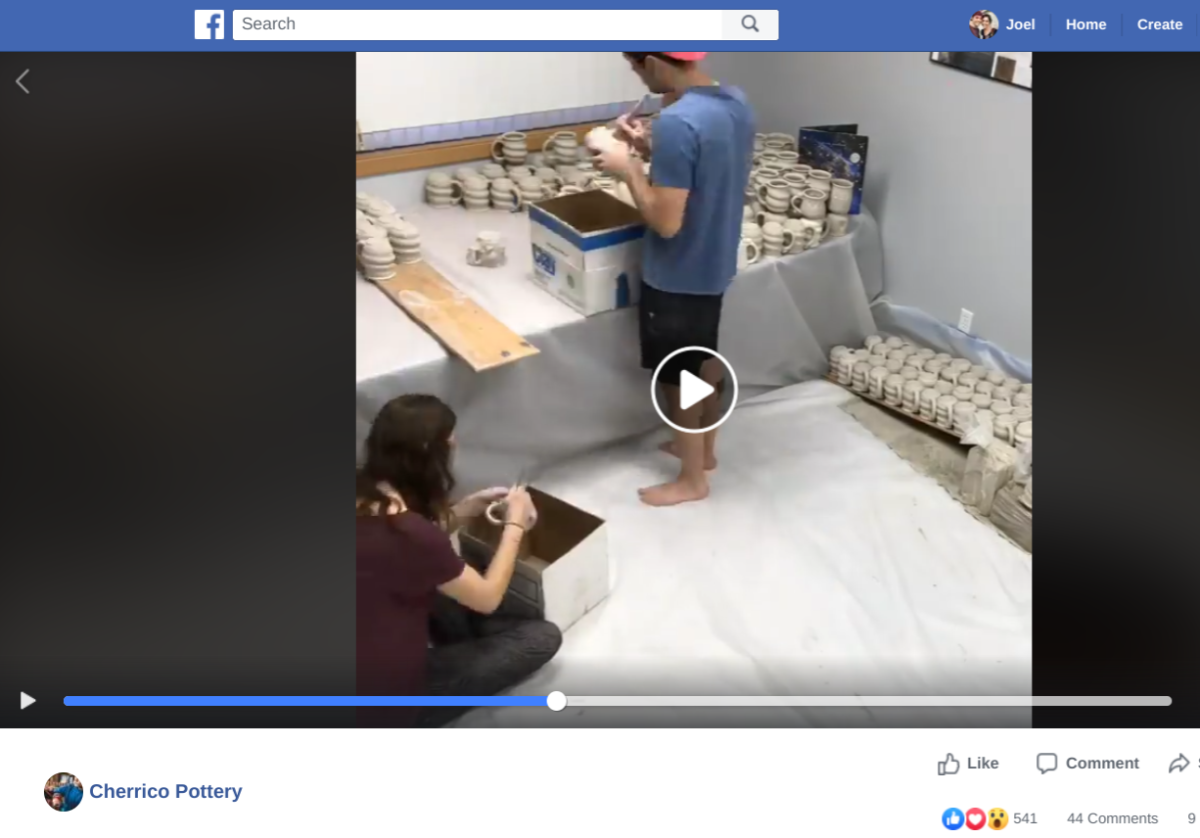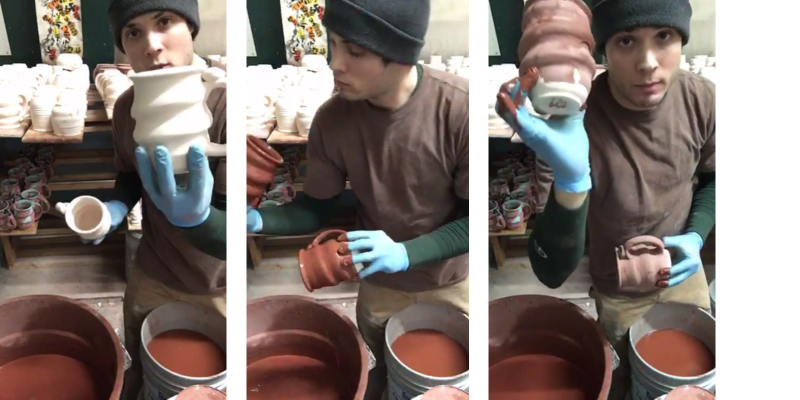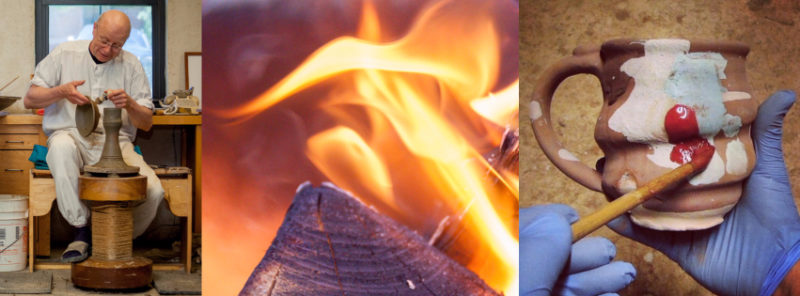
Cherrico Pottery and Cosmic Mugs are not completely smooth. 100% smooth mugs are typically mass-produced in factories, in batches of 10,000 or more, commonly made in China. (Chinese people have been perfecting mass production of high-temperature porcelain longer than any other humans on earth, since the Han Dynasty 2000 years ago).
In factories, workers will smash a mug with a tiny rough spot because they have 9,999 to replace it in the next kiln firing. But when you make pottery by hand, in a small workshop, you need to be more forgiving. It takes us a year to make over 4,000 pots, when a factory can produce 5,000 in 50 days.
Rough Textures from Clay
“Softening” is a process that attempts to knock all the rough spots off of dry pottery. Here is a time lapse of 4 hours of softening over 200 mugs:
That gets most of the rough spots off, but not all.
Some rough textures are included on purpose from the Stoneware clay that I use, which you can feel on the bottom of each Cosmic Mug. Bottoms can’t be glazed because glaze is molten liquid during the 2400 degree F. kiln firing. Mugs would fuse to the shelf. I grab the pots, dip them and leave enough raw clay to avoid glaze dripping onto shelves. I also leave my finger marks on the sides of most pots so they look and feel handmade. It’s messy. You can watch in a Facebook Live glazing demo:
I like smooth textures just like everyone else, but I’m required to accept the fact that rough textures are a natural, integral part of my handmade pottery process. They give the pottery character. That’s why I leave my finger marks on the bottom of each mug, embracing texture contrast. It helps them really look and feel handmade.
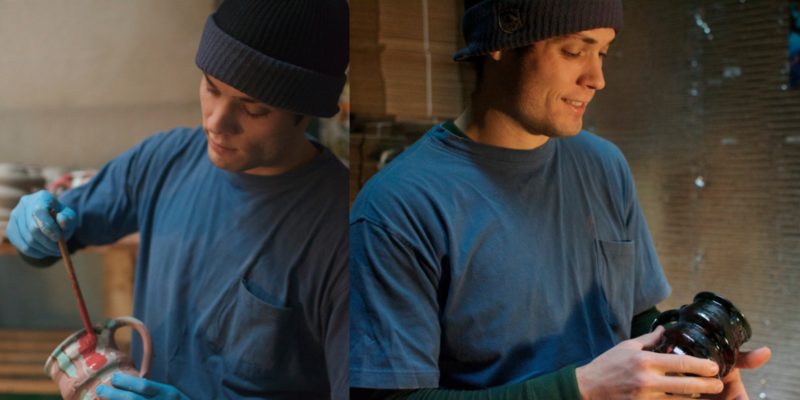
Rough Textures from Glaze
Some rough textures come from glazes. Just because it’s rough doesn’t mean it’s a flaw, but I do inspect every surface of every pot from every firing and try to adjust my custom glaze chemistry towards smoothness. Rough textures get marked with blue tape. At an average of 4,000 pots per year, that’s a lot of tape! Here’s a typical inspection from one firing.

Any spot with blue tape marks a slightly rough spot. Possible causes:
- Thin glaze, especially on edges, that reveals the raw, sandy Stoneware clay underneath glaze.
- A tiny clump of raw glaze powder that didn’t mix entirely into the liquid glaze.
- A tiny piece of wood ash or charcoal (Learn about my version of the Japanese Nuka Glaze here).
- A tiny glaze bubble, usually over red glazes, that we break and file into a crater with a diamond bit Dremmel.
- Shelf pieces sticking to the bottom.
- Crazy pottery magic that I’ll never understand.
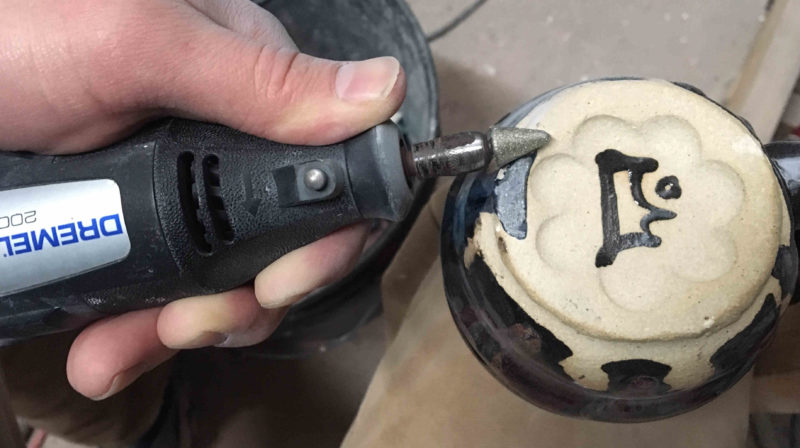
“It’s 1/3 the artist, it’s 1/3 the material and it’s 1/3 the firing. If you think that you’re going to expect to have control over the 1/3 of the firing, you’re going to be always disappointed.”
– Richard Bresnahan, “The Taste of Clay”
I love this quote because it tells how it’s impossible to fully predict what happens in the pottery process. That’s what makes pottery so special. Sure, it’s slightly unpleasant to have a tiny rough spot on a glossy mug, but it doesn’t mean you should discard it.
In fact, rough textures teach us a lot about ourselves. Pete Pinnell shared some great “Thoughts on Cups” about the surprising enjoyment of rough spots about 17:25 minutes in:

